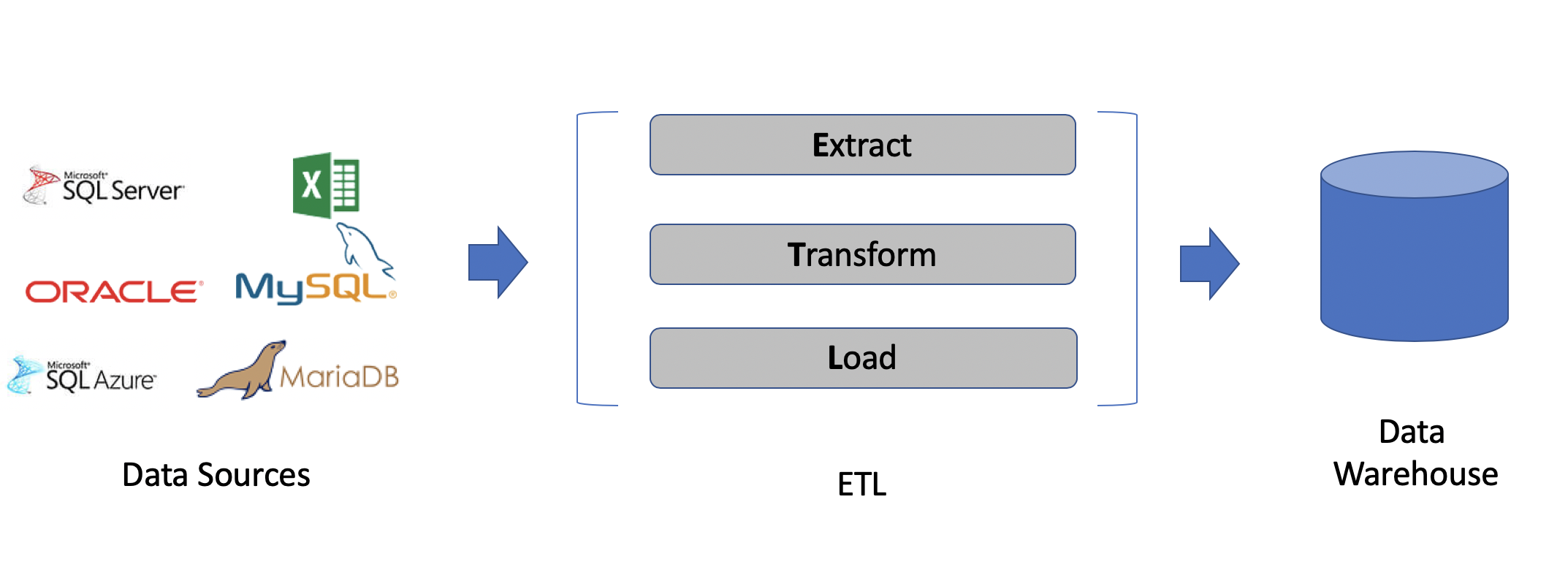DataPower
solutions for business
Drop us a line
Give us a call
0989.212.326
139 Phùng Văn Cung, Ward 3
Phú Nhuận, HCM
In computing, extract, transform, load (ETL) is a process in database usage to prepare data for analysis, especially in data warehousing.
Demo PowerBI ERP | BI in Retail | BI in HR
Data extraction involves extracting data from homogeneous or heterogeneous sources, while data transformation processes data by transforming them into a proper storage format/structure for the purposes of querying and analysis; finally, data loading describes the insertion of data into the final target database such as an operational data store, a data mart, or a data warehouse. A properly designed ETL system extracts data from the source systems, enforces data quality and consistency standards, conforms data so that separate sources can be used together, and finally delivers data in a presentation-ready format so that application developers can build applications and end users can make decisions.

Since the data extraction takes time, it is common to execute the three phases in parallel. While the data is being extracted, another transformation process executes while processing the data already received and prepares it for loading while the data loading begins without waiting for the completion of the previous phases.
ETL systems commonly integrate data from multiple applications (systems), typically developed and supported by different vendors or hosted on separate computer hardware. The separate systems containing the original data are frequently managed and operated by different employees. For example, a cost accounting system may combine data from payroll, sales, and purchasing.
The first part of an ETL process involves extracting the data from the source system(s). In many cases, this represents the most important aspect of ETL, since extracting data correctly sets the stage for the success of subsequent processes. Most data-warehousing projects combine data from different source systems. Each separate system may also use a different data organization and/or format. Common data-source formats include relational databases, XML, JSON and flat files, but may also include non-relational database structures such as Information Management System (IMS) or other data structures such as Virtual Storage Access Method (VSAM) or Indexed Sequential Access Method (ISAM), or even formats fetched from outside sources by means such as web spidering or screen-scraping. The streaming of the extracted data source and loading on-the-fly to the destination database is another way of performing ETL when no intermediate data storage is required. In general, the extraction phase aims to convert the data into a single format appropriate for transformation processing.
An intrinsic part of the extraction involves data validation to confirm whether the data pulled from the sources has the correct/expected values in a given domain (such as a pattern/default or list of values). If the data fails the validation rules it is rejected entirely or in part. The rejected data is ideally reported back to the source system for further analysis to identify and to rectify the incorrect records.
In the data transformation stage, a series of rules or functions are applied to the extracted data in order to prepare it for loading into the end target. Some data does not require any transformation at all; such data is known as "direct move" or "pass through" data.
An important function of transformation is the cleaning of data, which aims to pass only "proper" data to the target. The challenge when different systems interact is in the relevant systems' interfacing and communicating. Character sets that may be available in one system may not be so in others.
The load phase loads the data into the end target, which may be a simple delimited flat file or a data warehouse.
Depending on the requirements of the organization, this process varies widely. Some data warehouses may overwrite existing information with cumulative information; updating extracted data is frequently done on a daily, weekly , or monthly basis. Other data warehouses (or even other parts of the same data warehouse) may add new data in a historical form at regular intervals—for example, hourly
To understand this, consider a data warehouse that is required to maintain sales records of the last year. This data warehouse overwrites any data older than a year with newer data. However, the entry of data for any one year window is made in a historical manner. The timing and scope to replace or append are strategic design choices dependent on the time available and the business needs. More complex systems can maintain a history and audit trail of all changes to the data loaded in the data warehouse.

As data integration is an essential part of any BI project, leveraging the capacities of an ETL service will save you time, efforts and money, without compromising the flexibility and scalability required for data integration. ETL tools are thus highly important for the integrity of data that will later be used in decision-making and reporting. This is why we want to help you leverage all the advantages a modern ETL tool brings to your business, by providing you with an ETL as a service offer along our software implementation.